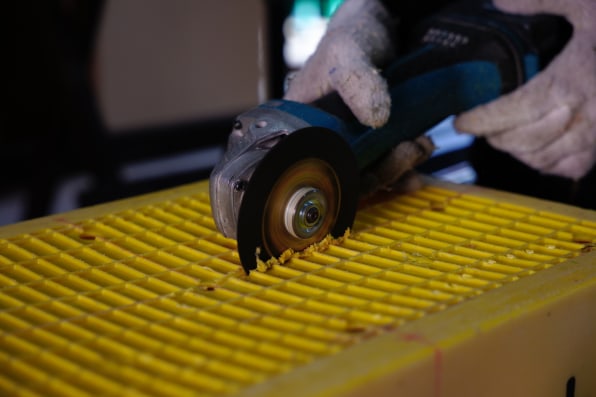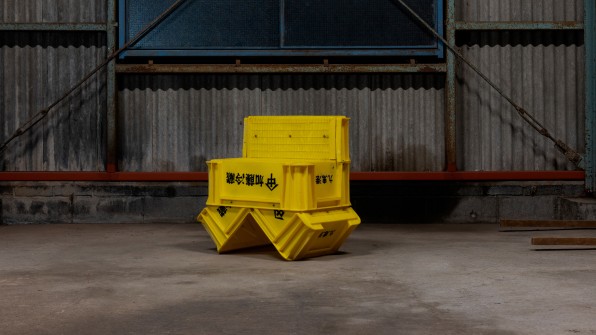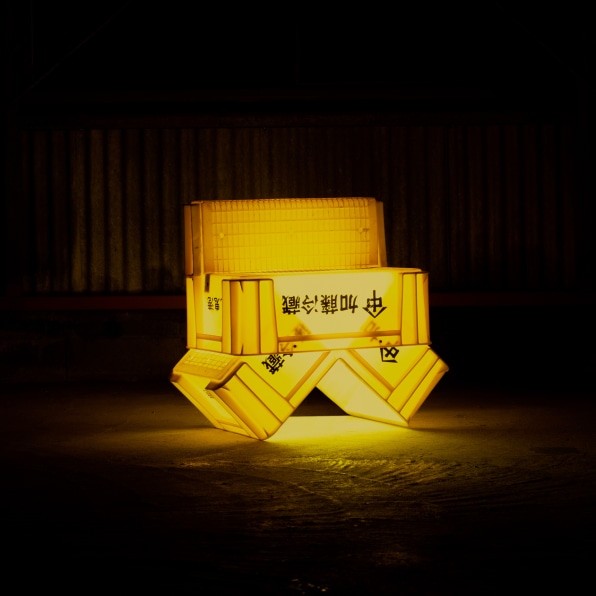- | 9:30 am
This Japanese designer turned discarded fishing containers into groovy furniture
Japan’s declining fishing industry has left behind a constellation of discarded fishing containers. Now some of them have been reborn as chairs.

In the 1980s, Japan led the world in the number of fish it caught every year, but the country’s fishing industry has been declining for over two decades. Overfishing, unsustainable practices, and contaminated water from the 2011 Fukushima nuclear plant meltdown have depleted fishing communities and left behind a constellation of discarded materials like fishnets, buoys, and fishing containers.

[Photo: courtesy Takuto Ohta]
Earlier this year, Japanese designer Takuto Ohta found about 70 of these containers piled up in an abandoned warehouse in the port city of Owase. No one had been in that warehouse in over 10 years, Ohta was told, so he decided to take nine of them— and turn them into furniture. Dubbed Common Neglect Material, the resulting collection includes a lounge chair, an armchair, and a stool, each formed by the simple act of bending plastic and bolting pieces together. The chairs haven’t been used in Owase yet, but they are part of the designer’s ongoing exploration into the untapped potential of discarded materials and objects.

[Photo: courtesy Takuto Ohta]
This isn’t the first time that ocean plastic has found its way into the design world. Recent examples include a task chair made with 10 pounds of reclaimed fishnets and intricate gowns made of plastic trash. But usually, the material has to be collected, sifted through, then melted or shredded down to a base material like pellets or threads, all of which comes with costly infrastructure challenges. Here, Ohta used the discarded material in its original form, making for a simpler, albeit less polished, piece of furniture.

[Photo: courtesy Takuto Ohta]
When Ohta first saw the containers, he immediately thought they would make great chairs. “In Japan, we often encounter situations where container boxes and beer cases are turned over and used as chairs,” he says. “However, I have always felt that there is room for design.”

[Photo: courtesy Takuto Ohta]
To transform the containers into usable pieces of furniture, Ohta performed the minimum number of changes necessary to achieve the final shape. For the legs, for example, he cut the bottom of one container in half and bent it into an L shape by heating the plastic in strategic places. For the seat, he chose another container, left it as is, and used four bolts to connect it to the legs. And after noticing that the plastic was worn out and a bit translucent, he fixed an LED light inside the chair to make it glow from within.

[Photo: courtesy Takuto Ohta]
The concept is simple, but Ohta says the chairs are only the beginning. First, he’s hoping that a few of them can find a home in Owase Marche, a warehouse-turned-event-space in the same city where he found the containers. Then, he’s planning to open source his design so that other people can make their own versions. “I don’t think the idea should be monopolized by anyone,” he says.




































